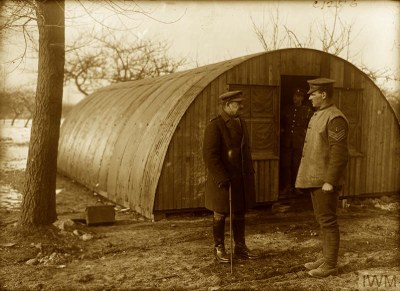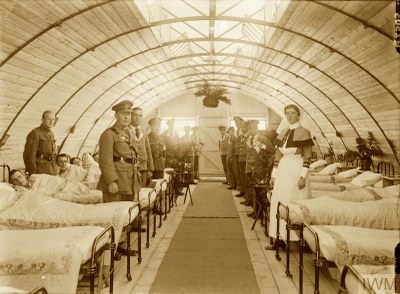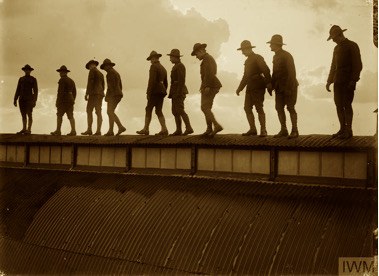Wartime Huts: The Development, Typology and Identification of Temporary Military Buildings in Britain 1914-1945, doctoral thesis by Karey L. Draper (2017)



Copyright Imperial War Museum
The use of temporary, prefabricated buildings in Britain during the twentieth century arose from wartime need to provide better, and perhaps more importantly, portable shelter for troops and equipment. This research provides the first comprehensive list of hut designs for the First and Second World Wars. The full lists and descriptions of each hut are given in the appendices. These lists, 20 types for the First World War and 52 from the Second World War, show the huge range and scope of the huts used and is the major contribution of this thesis. The concentration here is on generic types. Some huts were designed as one-offs and there is no possible way to catalogue these. This research has focused instead on those designs or industrially-produced types, which were meant to be produced en-masse as generic solutions to the problem: the sort of hut that might justifiably be given a name (such as a ‘Tarran’, a ‘Seco’, etc.). This thesis provides essential information enabling historians to be able to identify these types. It uses primary and secondary sources to trace the development of these huts and the effect that wartime shortages had on their design. Beginning with the earliest examples of temporary military building, it then focuses on the huts of the First and Second World Wars followed by a study of huts grouped in chapters by material. This research shows that the wartime period pushed industry to make giant leaps forward with construction methods and materials in just a few short years, where otherwise it may have taken decades. This research provides the first overview of this process to enable future researchers to identify and understand the development of these important wartime structures, many of which survive to this day.
